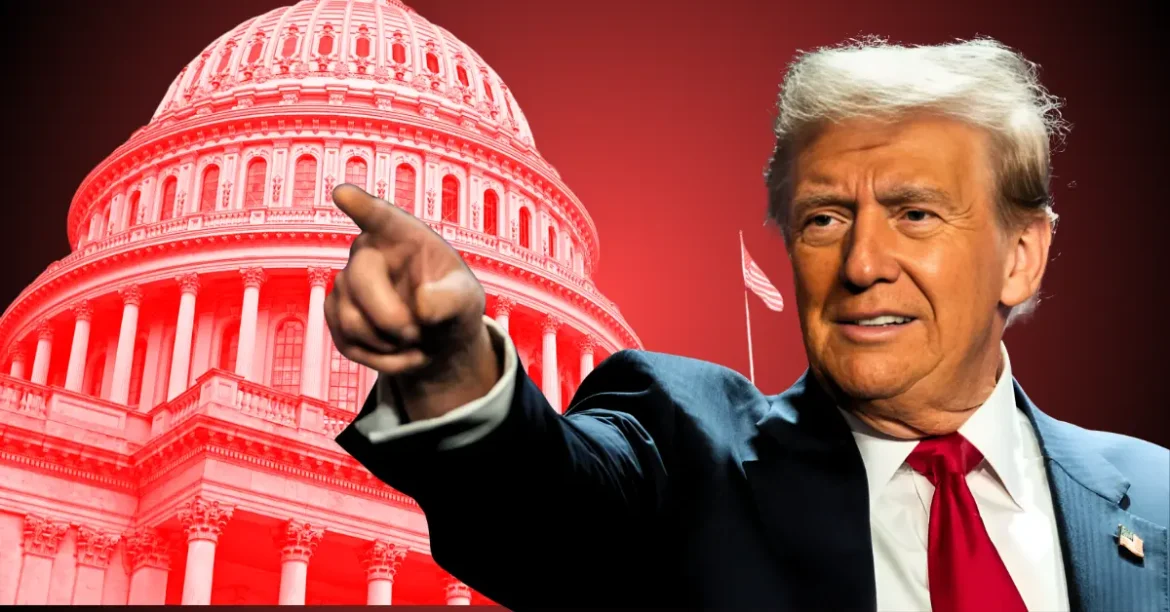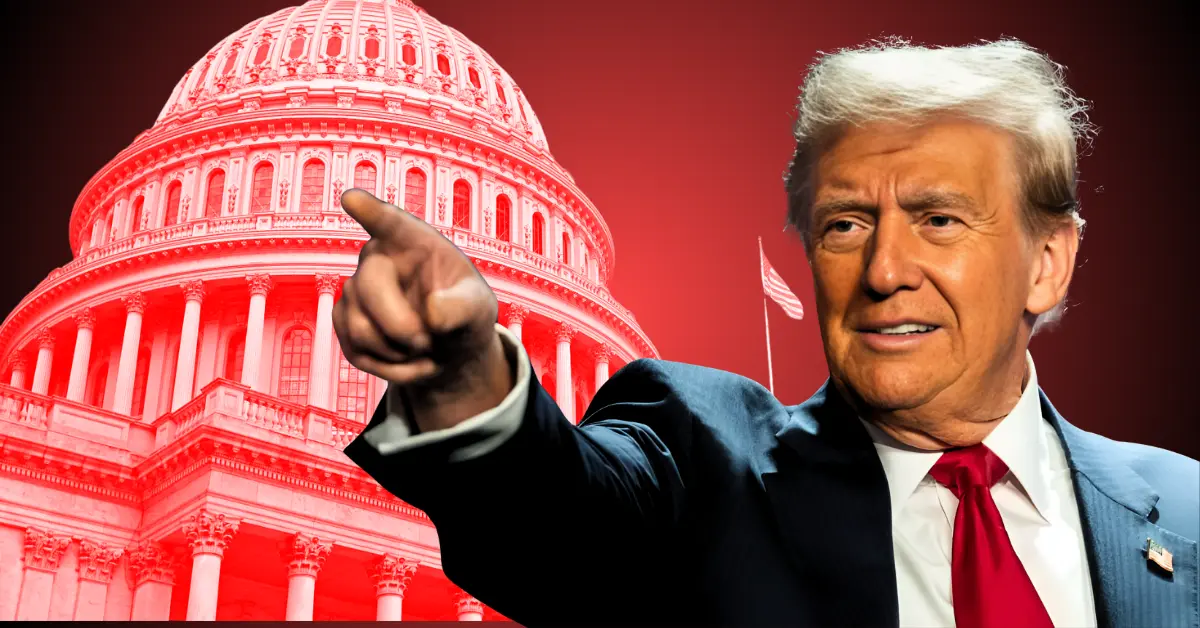The Clash of Economic Visions: Trump’s Fed Visit and the Battle for Monetary Policy
Introduction: A Presidential Intervention in Central Banking
The Federal Reserve, often referred to as the Fed, stands as a bastion of economic stability in the United States, operating with a degree of independence designed to shield it from political pressures. However, this independence was put to the test when former President Donald Trump made an unprecedented visit to the Fed’s headquarters, publicly advocating for drastic interest rate cuts. This move wasn’t just a policy disagreement; it was a direct challenge to the Fed’s autonomy and a stark illustration of the tension between political ambitions and economic pragmatism.
The Historical Context: A Long-Standing Disagreement
Trump’s criticism of the Fed’s monetary policy was not a fleeting moment of frustration but a sustained campaign. His persistent calls for lower interest rates were rooted in his belief that such measures would act as a catalyst for economic growth, reducing the national debt and stimulating various sectors of the economy. This perspective, however, clashed with the Fed’s dual mandate: to promote maximum employment and maintain stable prices.
The appointment of Jerome Powell as Fed Chair added a layer of complexity to this dynamic. Despite being Trump’s nominee, Powell maintained the Fed’s independence, a decision that frustrated the former president and intensified his public pressure campaign. This culminated in Trump’s visit to the Fed, a move that underscored the growing rift between the White House and the central bank.
Trump’s Argument: A Swiss Model for the U.S.
A central tenet of Trump’s argument was the comparison between the U.S. and Switzerland’s interest rate policies. He frequently cited Switzerland’s low benchmark rate as a model for the U.S., suggesting that adopting similarly low rates would ease housing affordability and boost the overall economy. However, this comparison was oversimplified and failed to account for the significant differences between the two economies.
Switzerland’s economic structure, currency, and macroeconomic environment are vastly different from those of the U.S. The Swiss Franc’s status as a safe-haven currency and the country’s unique economic conditions necessitate a different approach to monetary policy. Moreover, Switzerland’s negative interest rate policy, implemented to combat deflationary pressures, is not directly applicable to the U.S. economic context.
Trump’s assertion that the world would “collapse” without the U.S. also reflected a narrow view of global economic interdependence. While the U.S. economy is a significant driver of global growth, aggressive interest rate cuts could have unintended consequences, including currency depreciation and increased borrowing costs in the long run.
The Demand: A 300-Basis-Point Cut and Its Risks
Trump’s call for a 300-basis-point (3%) rate cut was a bold and unconventional proposition. Such a drastic reduction would represent a significant departure from the Fed’s gradual and measured approach to monetary policy. While lower interest rates can stimulate economic activity by encouraging borrowing and investment, a cut of this magnitude carries substantial risks.
One primary concern is inflation. A rapid injection of liquidity into the economy could lead to overheating, pushing inflation above the Fed’s target range. This could erode purchasing power, hurt consumers, and ultimately destabilize the economy. Additionally, artificially low interest rates can encourage excessive risk-taking and fuel speculative bubbles in asset markets, such as real estate or stocks. When these bubbles burst, they can trigger financial crises and economic recessions.
Furthermore, a 300-basis-point cut could signal a lack of confidence in the U.S. economy, potentially undermining the dollar’s value and raising borrowing costs in the long run. It could also be interpreted as political interference in the Fed’s operations, damaging its credibility and independence.
The Fed’s Perspective: Independence and Mandate
The Fed’s primary mandate is to maintain price stability and full employment. This requires a delicate balancing act, using monetary policy tools, including interest rates, to steer the economy towards these goals. The Fed operates independently of the White House to ensure that its decisions are based on economic data and analysis, rather than political considerations.
Powell has consistently emphasized the Fed’s commitment to data-dependent decision-making, suggesting that interest rate adjustments will be based on economic indicators, rather than political pressure. This stance has put him at odds with Trump but is essential for preserving the Fed’s integrity and effectiveness.
The Fed is keenly aware that succumbing to political pressure could have detrimental consequences for the economy. It could undermine investor confidence, create uncertainty, and ultimately hinder the Fed’s ability to achieve its dual mandate. Therefore, resisting external pressure, even from the President, is paramount.
Implications and Ramifications
Trump’s visit and demands have several significant implications:
– Erosion of Fed Independence: Even if the Fed doesn’t directly comply, the persistent pressure can subtly influence its decision-making process. The perception of political interference can damage the Fed’s credibility, both domestically and internationally.
– Market Volatility: Trump’s pronouncements often trigger market reactions. His calls for lower rates can lead to fluctuations in stock prices, bond yields, and currency values, creating uncertainty for investors.
– Policy Uncertainty: The clash between the President and the Fed creates policy uncertainty, making it difficult for businesses and individuals to plan for the future. This uncertainty can dampen investment and economic growth.
– Increased Scrutiny: Trump’s actions have brought increased scrutiny to the Fed’s operations. This can be both positive and negative. On one hand, it can promote transparency and accountability. On the other hand, it can politicize the Fed and make it more difficult for it to operate effectively.
Conclusion: Navigating the Delicate Balance
Donald Trump’s visit to the Federal Reserve and his insistent calls for aggressive interest rate cuts highlight the enduring tension between political influence and central bank independence. While a president naturally desires policies that support economic growth, the Fed’s mandate to maintain price stability and full employment requires a more nuanced and independent approach.
The comparison to Switzerland, while appealing in its simplicity, overlooks the complex economic realities that necessitate tailored monetary policies. A drastic 300-basis-point cut, as advocated by Trump, carries significant risks, potentially fueling inflation, creating asset bubbles, and undermining the Fed’s credibility.
Ultimately, the Fed must navigate this challenging landscape by adhering to its data-dependent approach, resisting political pressure, and prioritizing the long-term health of the U.S. economy. Maintaining this delicate balance is crucial for preserving the Fed’s independence and ensuring its effectiveness in achieving its dual mandate. The future economic trajectory of the United States hinges on this delicate balance.





